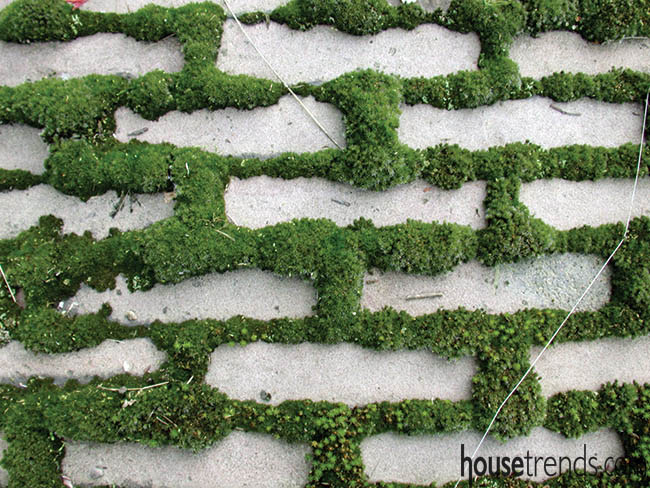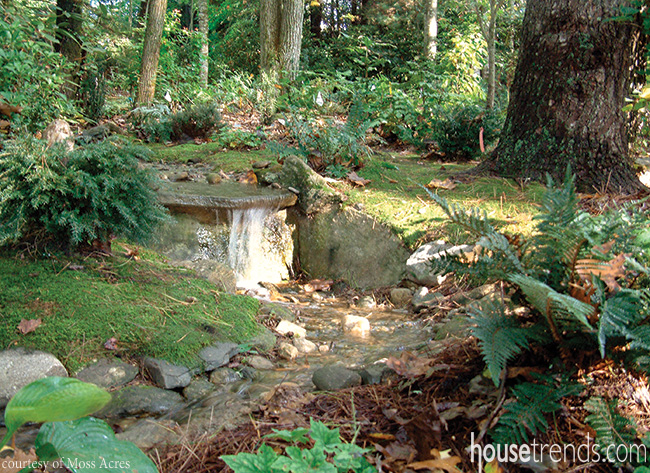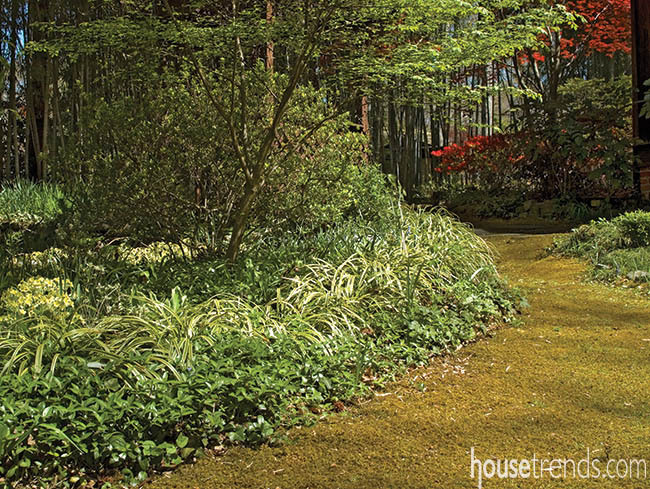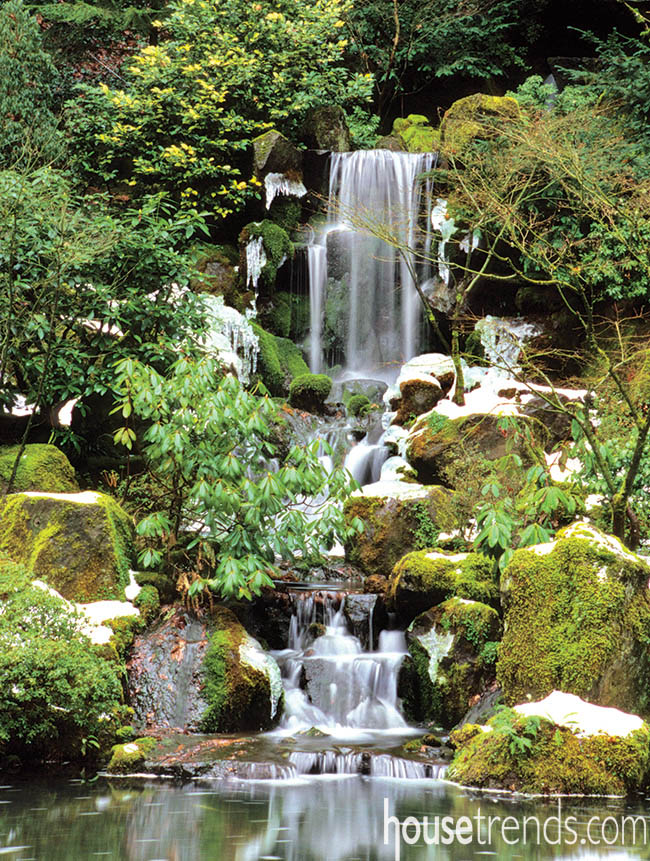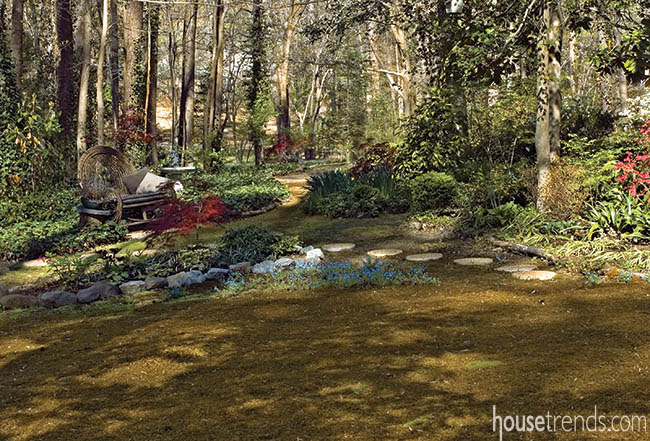Moss in a garden or landscape design, with its vibrant green palette, is an aesthetic to be appreciated. Its serene beauty seduces—calming and restful to the eye, it is lush and invites touch. Covering the ground with softness, and lending a green hue to shade, it grows where most other plants will not.
Admiration of moss in the garden doesn’t come easily to people who revere a lush lawn above all else. Moss that creeps into their turf is declared a “weed” and cause for chemical warfare. This often backfires though, as weed killers aid the spread of moss by way of clearing the soil of competing plants. Moss is an excellent, chemical-free, no-mow alternative ground cover that is ideal for shady conditions. Once established, moss takes less maintenance than turf and I say, “Where the grass wants out, let the moss come in!” Encourage what nature wants to do. You, your garden, and the environment, will all benefit.
Promoting the moss growth requires regular clearing of leaf litter and other debris—nothing more. Well, nothing more than patience and time, but the reward, aah…a forest floor voluptuously carpeted in a velvety green so compelling to bare feet that you must shuck off your shoes (and show off your pedicure!) for a tickly trip across the cushy swatch.
This most tactile plant brings freshness to the garden, especially in winter (its dormant season is July through August unless irrigated). It’s the time of year when the velvety green of moss is most welcomed. But, even in dormancy moss adds both texture and color in the garden.
Perhaps you don’t have a lot of shade in your yard. No problem. You can grow moss in smaller patches and on many surfaces. A mossy covering adds the patina of permanence; its ageless beauty, long appreciated in the gardens of Japan, can be a visual element in your garden too. Moss can be grown successfully in containers tucked into a shady nook. It can also be raised innocuously on rocks, walls, roofs, and statuary due to the fact that it doesn’t have destructive roots. Instead, moss puts out wispy, root-like extensions (technically, rhizoids) that hold it in place.
Growing moss where none exists is trickier than encouraging what wants to grow. Some advice? Choose your location well—it must offer shade, moisture and acidic soil (pH level 5.0-6.0, is ideal). The area to be planted must be clear of existing plants and debris. Place moss plants onto the soil, tamp them firmly into position, and water regularly for the first 2-3 weeks.
Assuming environmental conditions are met, transplanting sheets or clumps of moss is the fastest way but may not fit into everyone’s budget. An economical, but more iffy option provided on the Moss Acres website is to create a moss slurry in a blender. Mix a handful of moss with a liquid (water, beer, or buttermilk) and a spoonful of water retention gel, and blend briefly until thick. Smear the mixture over the prepared planting bed where you want the moss to grow. Water constantly until well established. This method can also be effectively used on rocks, statuary and terracotta pots.
The best times of the year to collect and transplant mosses are in spring and fall. Search for moss nearby that is growing in conditions similar to where you will be transplanting it. There are some mosses that will grow in sun with adequate moisture. Only harvest moss from a natural or wild area where it is permitted by law. And, you should take only a small portion of what is growing there. If possible, collect moss after a rain. Care must be taken not to destroy its system of pores so dig up small clumps with some soil still attached.

